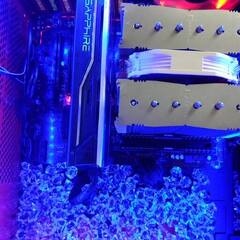Theoretical AC vs DC question regarding future of electricity and PCs
-
Featured Topics
-
Topics
-
Imwickman ·
Posted in Troubleshooting0 -
AlDowy ·
Posted in CPUs, Motherboards, and Memory1 -
blu-iwnl ·
Posted in Troubleshooting0 -
BrodieWool ·
Posted in Troubleshooting0 -
Hichem922 ·
Posted in Troubleshooting11 -
5
-
5
-
1
-
1
-
Hichem922 ·
Posted in Troubleshooting2
-





.thumb.png.b3167199d731d1ef4c7a3db9c011ce01.png)









Create an account or sign in to comment
You need to be a member in order to leave a comment
Create an account
Sign up for a new account in our community. It's easy!
Register a new accountSign in
Already have an account? Sign in here.
Sign In Now